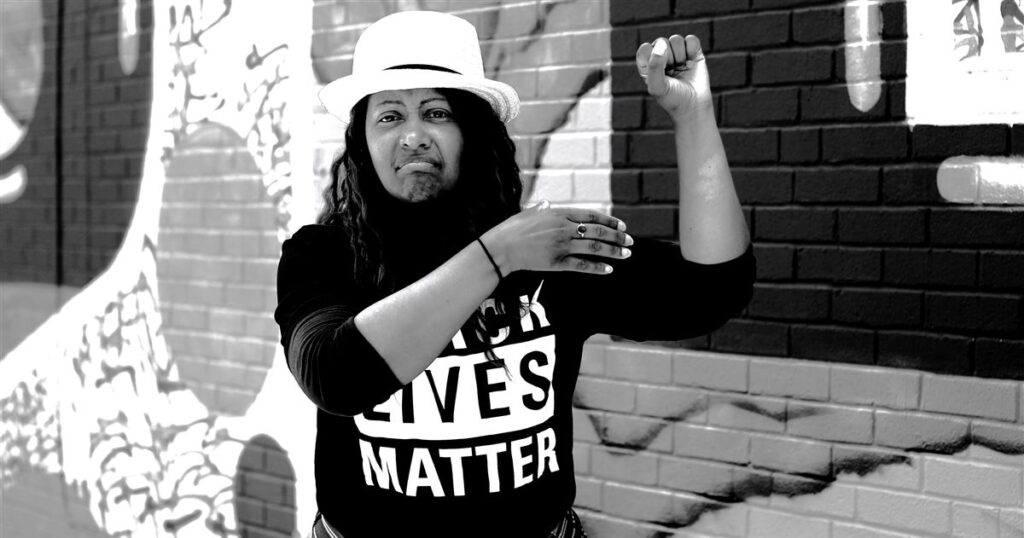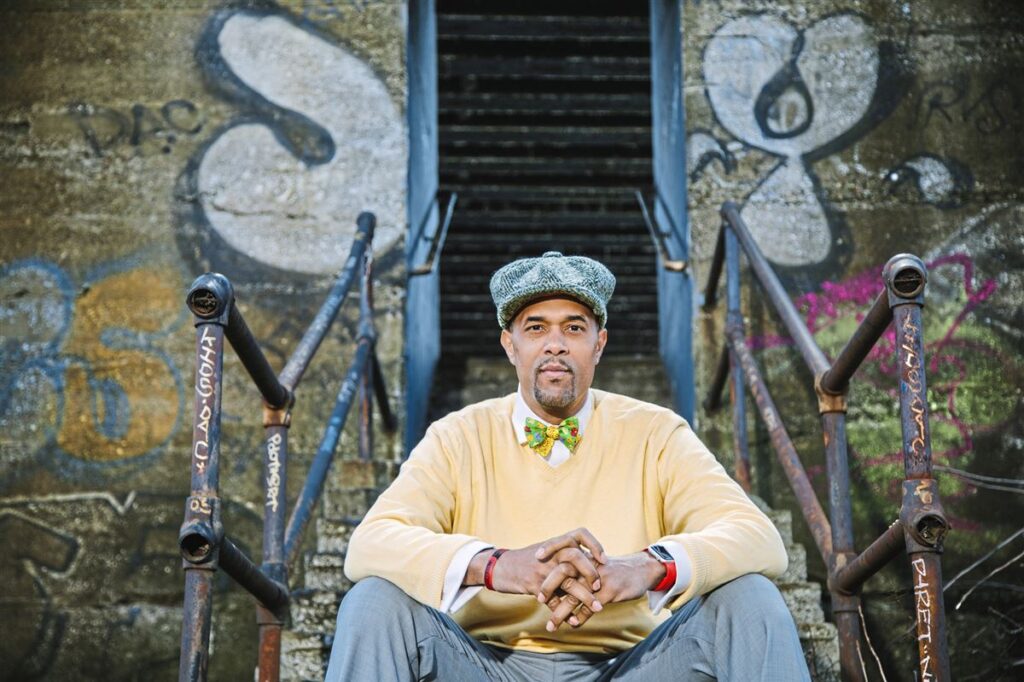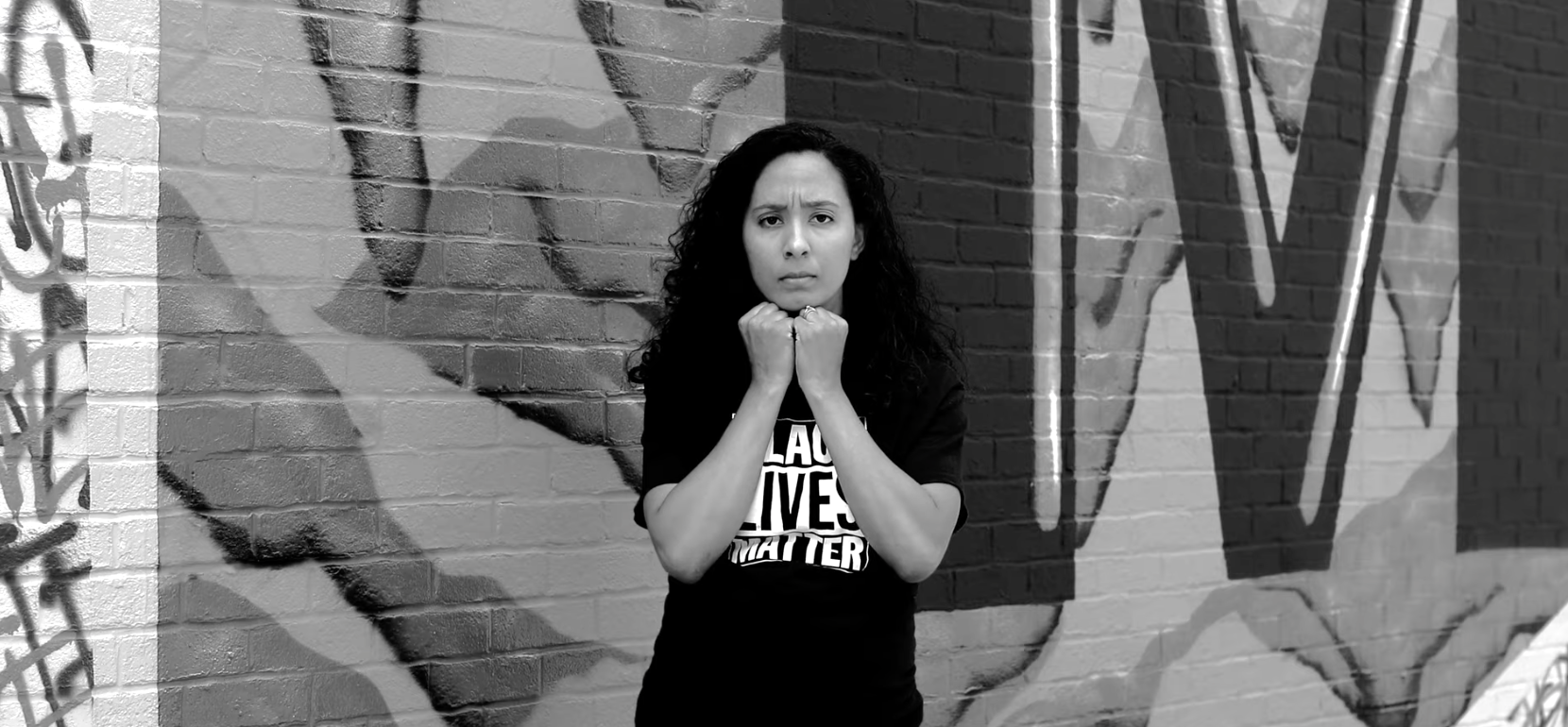Reminder Note: WPSD Students, Alumnus, staff/teachers and friends who are participated in the video.

Venita Smith uses American Sign Language to represent the word “power” in a Black Lives Matter PSA created by local artist and cinematographer Emmai Alaquiva.
For professional interpreter Amy Crawford, American Sign Language is her first language.
Ms. Crawford is a CODA — child of deaf adults. Interpretation has always been a part of her everyday life growing up, using ASL at doctor’s appointments, in the grocery store and at family gatherings.
She said being born to deaf parents showed her the importance of bridging the gap between people who communicate in different ways. So when Pittsburgh artist and cinematographer Emmai Alaquiva asked for her help on a project he was working on to amplify the voices of the deaf community within the Black Lives Matter movement, she felt an automatic responsibility to be involved.
“I was actually very happy, especially right now with the change going on in the world and people realizing that every individual matters,” she said. “I just felt very passionate about being involved in that movement.”
Mr. Alaquiva’s idea was to create a Black Lives Matter public service announcement starring members of the deaf community. With help from Ms. Crawford, as well as several other collaborators and disability advocates, the Emmy Award-winning filmmaker was able to put together a 60-second PSA — called “Unspeakable” — that uses ASL to send a message about inclusivity and equality. The PSA was released last Wednesday.
The idea came about when Mr. Alaquiva’s 8-year-old daughter, Makayla, was watching her dad edit video from several protests that he had covered around the city. The father and daughter duo have been taking ASL classes over the past two years, and Makayla noticed something was missing from the footage.
“She would look over my shoulder while I was editing, and she pointed out that no one was doing ASL at the protests,” Mr. Alaquiva said Monday.
That’s all it took for the him to pick up a pen and begin working on a script. He solicited the help of Ms. Crawford as well as Greg Pollock, an accessibility officer, and interpreter Danielle Filip, who all worked to cast members of the deaf community, including people who are hard of hearing and CODAs of different ages, races and genders.
The black-and-white video is captioned with a script that demands social justice while using intentional language about listening, speaking truth to power and refusing to be muted. In the background plays original music written and produced by Pittsburgh natives and award-winning musicians Bianca “Blush” Atterberry and Stephen “Bud’da” Anderson.
“I think it is a beautiful thing that all of people from all walks of life want to support each other,” said Ms. Atterberry, who lives in Los Angeles.
Mr. Anderson noted that the PSA even opened his eyes to a community that may have been underrepresented in the national civil rights movement that was sparked by the death of George Floyd.
Opening eyes to the presence of the deaf community was a mission that Mr. Alaquiva feels the video is accomplishing. He said the PSA garnered tens of thousands of views in the past week and he’s gotten international feedback, all of which has strengthened his connection and appreciation for ASL.
“The beauty of ASL is the fact that we can learn so much from the culture of ASL,” he said. “A lot of people think that it’s a direct parallel of the English language when it’s really not. It’s its own beautiful language. It’s its own dance, its own rhythm, its own culture.”
The film director said he plans to book air time on several networks so that the PSA can air nationally, part of the reason Mr. Alaquiva didn’t want to put the video out on social media or YouTube.
“It was important to make it a public service announcement rather than just a video because this needs to be heard on a scale larger than just being a ‘cute’ video,” he said. “When you’re about this work and about social justice, and you’re about amplifying voices — especially those who are deaf, hard of hearing and those with disabilities — you have to approach it in a different light than being something that you post online.”
Mr. Alaquiva and Ms. Crawford both recognized the coincidental yet appropriate timing of releasing the PSA just days before the 30th anniversary of the passage of the Americans with Disabilities Act.
“The coincidence was wonderful because in this transition that the world’s experiencing right now with COVID and how that influences people to recognize what really matters … this PSA is a result of that ADA being passed several years ago,” Ms. Crawford said. “This is another ripple in that process to show that equality is very important.”
She said the individuals who starred in the video walked away feeling empowered, as the deaf community is familiar with the plight of all disenfranchised communities.
“Those who were Black were able to show that, ‘Yes, I love representing my deafness as well as my Blackness. And those who were not were very happy to be involved and show that equality and love was important,” she said.
Mr. Alaquiva, with the help of producer Jack Ohram, developed a website, UnspeakableBLM.org, to act as a landing page for resources about the deaf and hard-of-hearing communities as well as ASL.
He hopes the PSA will be a conversation starter and motivate society to include such groups in discussions surrounding social justice.
“Even though there are people with disabilities, doesn’t mean we get to dismiss their ability. There’s a lot of individuals that if they just get into the room and start to be a part of these conversations, we can really change the landscape of what this conversation means to us.”

Artist and cinematographer Emmai Alaquiva, here in a 2018 photo, created a Black Lives Matter public service announcement starring members of the deaf community. The 60-second PSA uses ASL to send a message about inclusivity and equality. The PSA was released last Wednesday.
This Pittsburgh Post-Gazette article is originally posted on July 29, 2020.
